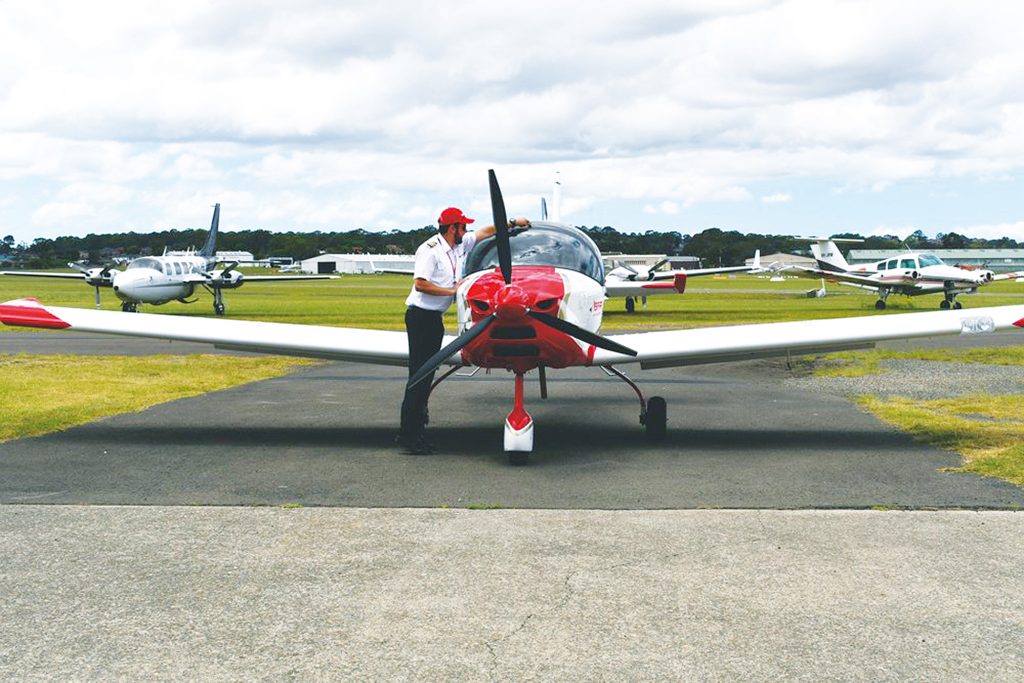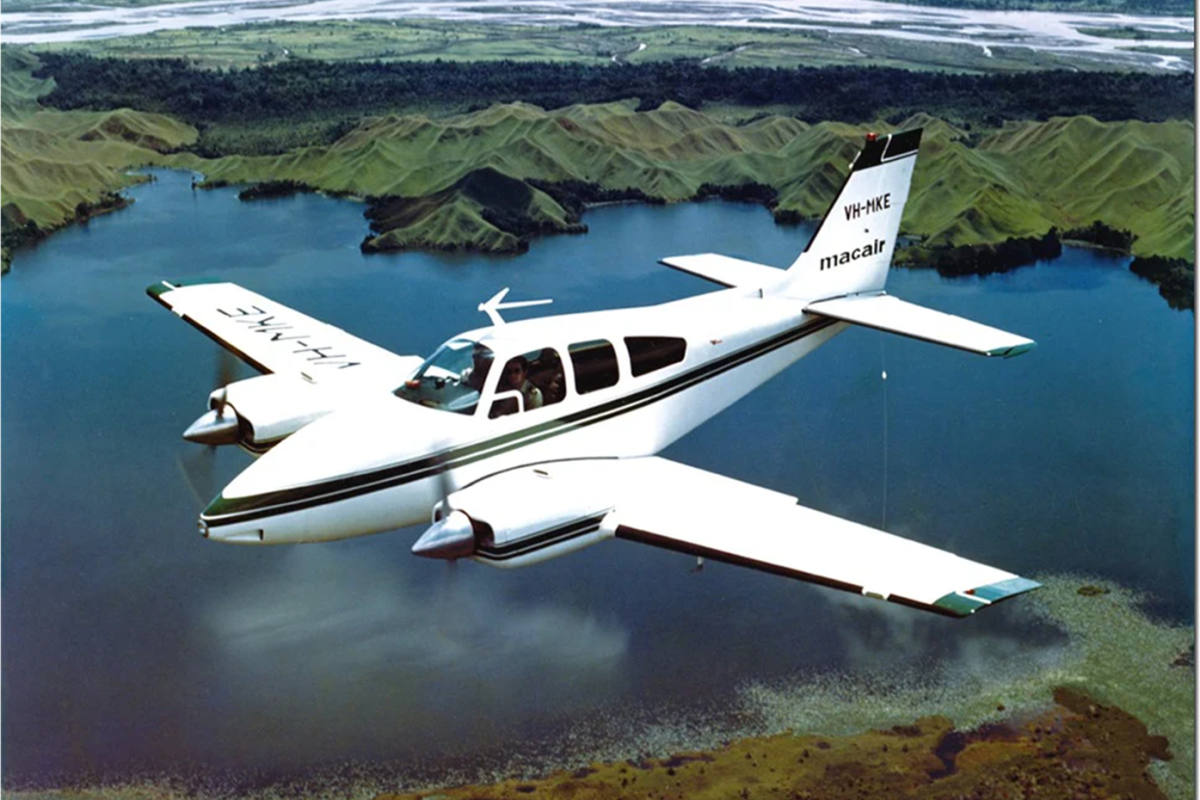WE TALK TO JOSHUA SAUNDERS – SYDNEY FLYING ACADEMY CFI – ABOUT UPGRADING YOUR FLYING TICKET AND WHAT’S INVOLVED.
So, you’re signed off on your RAAus certificate – the dream came true, you’re a pilot! But the journey of adventures and learning has just begun. Next, you can look at pushing yourself into more areas of aviation by gaining different skills. Young or old, half the fun is learning something new.
Some people want to get their pilot licence and muck around on the weekends, then call it a day. Perhaps you want to fly different plane types and configurations, learn with different instructors, meet new people and travel to new places. Learning new things refreshes the joy of aviation and even pushes us to be better pilots – but it’s all about personal preference. That’s why Joshua Saunders, CFI at Sydney Flying Academy, always starts with the question “what is your goal?”.
RATINGS & ENDORSEMENTS EXPLAINED
RAAus and CASA talk in terms of Aircraft Ratings, Class Ratings, Type Ratings and Endorsements. I know, right? Just when you passed your exams and thought you knew everything… Don’t worry though, we’re about to break things down into bite-sized chunks. In RAAus, you earn a Recreational Pilot Certificate (RPC) for a specific Aircraft Group. You then add relevant endorsements to this RPC for the Aircraft Group.
Then you’ll have your CASA Type Rating. This covers everything like multi-engine or turbo-jet powered aircraft, but under RAAus you’re mostly looking at hanging out with Single Engine types with up to two seats. Planes you’ll see or fly in RAAus are known as Group A (3-Axis) aircraft, Group B (Weightshift Microlight) and Group D (Powered Parachute). To be certified in any RAAus aircraft type, you’ll cover: take-off, control in normal flight, circuits, emergencies, forced landing and managing abnormal situations.
By contrast, endorsements are essentially variations, attachments and additional privileges that you can add to your ticket. For many, cross-country and passenger endorsements are often at the top of the list so you can enjoy your adventure with some company. There’s also instructor ratings, but we won’t get into that right now, and a list of design features – such as floats – they’re articles for another day.
HOT TIP:
If you’re looking to brush up on your knowledge, Part 61 of the Civil Aviation Safety Regulations (CASR) is the bible for obtaining and maintaining all licences, ratings and endorsements.

THE MAGICAL NUMBER 5
When you’re looking to add an endorsement, “Think in terms of about 5 hours to achieve most endorsements. A bit of classroom, the rest in the cockpit”. That’s a rough estimate from Joshua Saunders, CFI at Sydney Flight Academy.
“It’s not about being a pass or fail exercise, it’s about putting in the sufficient time and practice for you as a pilot.”
This is not a rule, however — it is all based on RAAus and CASA minimums, plus pilot competency.
TAKE ME HIGHER
If you’re looking to go beyond, your RPL
(Recreational Pilot Licence) is the next logical
step (or PPL, if you really want). Under RPL, you
can have up to five passengers plus yourself, you
can fly 1,500kg MTOW aircraft (Cessnas and
Pipers are common, for example) and you can
become endorsed for controlled aerodromes
and airspace. You can also think about gaining
an aerobatics or specific design feature
endorsement that becomes available in this
licence category.
Some answers to a few common questions though:
- Yes, you can still fly RAAus aircraft when you have an RPL – as long as you continue to meet RAAus requirements.
- Yes, you need a RAMP-C every 2 – 4 years depending on your circumstances, but your GP can sort out a Basic Class 2 medical nowadays. There are catches, however, such as not being able to do aerobatics on a Basic Class 2, so you might decide to choose a DAME (Designated Aviation Medical Examiner) to assess you for a Class 2 Medical instead.
- Yes, you need to do a flight review every two years for currency.
- Price? Think in terms of $2,500 – $3,000, (depending on aircraft type and competency) for an RAAus (RPC) to RPL conversion.
- When you upgrade, you also have to transfer your endorsements. That means an instructor needs to re-sign off on your cross-country, for example. Subject to your personal circumstances, you might only need to do a cross-country as a competency check flight, rather than the entire syllabus. You can put it to good use, too – I dropped into Essendon a few times on my cross-country check flight so that I could also tick off my controlled airspace requirements.
HOT TIP:
If you want to know specifics of any training, log into the RAAus Member Portal and search “Syllabus of flight training”. For some endorsements and privileges there are minimum requirements in addition to the training syllabus, such as minimum hours PIC. The syllabus is the master checklist your instructor will be using to sign you off.
CROSS-COUNTRY
When you go for cross-country, all your flying skills are put to work. It’s the most complex endorsement, but it’s easily the most rewarding when you can finally leave that 25nm-diameter bubble to explore. You’ll learn weather observations and interpreting meteorological reports, compensating for wind speed and direction, correcting your course mid-flight, picking safe and preferred altitudes and tracking your trip as you fly. It’ll teach you how to use and interpret maps and references, plan and manage fuel, plus you’ll learn further radio requirements such as inbound calls, changing radio frequencies based on your location, and additional circuit joining procedures. You’ll learn traditional printed map planning, as well as using Apps like AvPlan or OzRunways.
You’ll learn how to plan to one location and back, multiple locations and waypoints. The moment you go to other aerodromes, you’ll learn new intricacies – different circuit patterns, different local geographic and weather features, plus a long list of smaller but important lessons that help build your airmanship.
PASSENGER
If you want to share flying with friends, this is a must! You’ll need to have 10 hours solo pilot in command, and be signed off by your CFI. You’ll learn to brief your passengers for flight, tell them about safety considerations and procedures, plus you will need to fly in a manner that is comfortable for them (re-think those steep turns or stalls!). You can adjoin this endorsement into any flight, such as your cross-country flight test, so that you’re not paying for unnecessary flight time.
RADIO
In order to operate the radio on board any aircraft, you must be trained and issued with the relevant qualification. The radio in any VH registered aircraft may only be operated if the pilot holds a CASA issued Flight Radio Operator Licence (FROL) or CASA Aviation Radio Operator Certificate (AROC). For RAAus aircraft, the pilot must hold a current RPC and RAAus Radio Endorsement. Expect to be studying some literature, reviewing flight pattern diagrams to understand when to make calls and intentions, understanding the radio equipment, the intercom, transponder, plus use and procedures (normal and emergency). Radio calls can be daunting at the start, but it comes with practice. If you’re trying to learn the phonetic alphabet, try and read numberplates for practice – Tango…Whisky…Foxtrot…
ADVANCED PILOT AWARD
This will step-up your skills to the next level. Your general airmanship will be reviewed, such as engine handling, ground handling, adhering to VFR, plus your engine failure knowledge and preparation. You’ll run through balanced flight, steep lazy eights, steep 360 degree gliding turn, sideslipping and slipping turns, stall recognition and recovery – even a gliding approach from overhead the field. All are good preparation and skills to master!
FORMATION
Formation flying can be super fun to join air adventures with more people and planes. It’s a great skill for anyone who likes a fly-in or aspires to travel with other aircraft, too. The skills covered include your airmanship considerations, flying lead, and flying non-lead. It’s in your non-lead position that many find there’s more thinking involved: maintaining station whilst taxiing, take-off, maintaining station mid-flight, joining and breaking manoeuvres, changing leaders, plus your circuit approach and landing. You’ll also cover safety and emergency information too.
GLIDER TOWING & HANG GLIDER TOWING
These are two separate endorsements. Towing is broken-up into normal and abnormal procedures. Normal procedures include ground preparation, takeoff, climbing, release, descent, approach and landing. For gliders, it also includes cruising and descending on tow. The abnormal procedures you cover include take-off run abortion, partial power failure, glider airbrakes opening during climb, an order to the pilot to release the glider, and ‘unable to release’ situations.

HOT TIP:
Book an endorsement with a different instructor. They have different methods, different backgrounds, different experiences – with their collective instruction, I’d argue you become a much better pilot… and you meet interesting people!
RETRACTABLE UNDERCARRIAGE
Under retractable undercarriage, you’ll need to have a good theoretical understanding, plus practice normal operations – gear extension, retraction, and understanding the gear indication system of the aircraft. You’ll also cover abnormal and emergency procedures associated with the endorsement – such as the total or partial failure of gear extension, retraction or gear indication.
TWO STROKE
For this endorsement, RAAus expects us to have a solid theoretical understanding of two stroke engines, as well as appropriate pre-flight planning. Beyond that, the two areas of focus become your in-flight operation of a two stroke and your considerations and requirements around refuelling.
LOW LEVEL & UTILITY
The Utility endorsement covers safety and training for safe farm flying, fence and water trough inspections and stock spotting operations below 500’ AGL.
You’ll need to be competent with the syllabus requirements, plus training and a flight test. There are some rules, too, such as needing permission from the landholder, a general or one-off permit from CASA. You need 50 hours PIC prior to commencing training for a Low Level and 100 hours PIC prior to a Utility endorsement.
You’ll cover flight preparation and ground assessment (fuel, taxiing, aircraft readiness etc), radio requirements, ground handling, safety factors such as obstacles, weather and hazards, then handling and managing the specifics of low-level flying.
CONTROLLED AIRSPACE
You can’t fly in controlled airspace in RAAus…yet. That one is a work in progress. The exception to this is if you’re training at one of just a dozen flying schools, in their registered aircraft, who have a Class D CASA exemption. In my opinion, a combination of regional andcontrolled airspace makes for a better pilot. If you’re able to, I’d recommend getting a biennial flight review or some lessons in a flying school located in controlled airspace, to gain some experience. There’s more radio work and a bit more to think about, but it’s great preparation if you’re looking to get this endorsement one day.
A few of the SportPilot team are about to undertake some of these endorsements – watch this space to follow their experiences.
Are you undergoing training, or thinking about it? Send in your stories, photos and hot tips to editor@sportpilot.net.au and we’ll send you a SportPilot cap!









